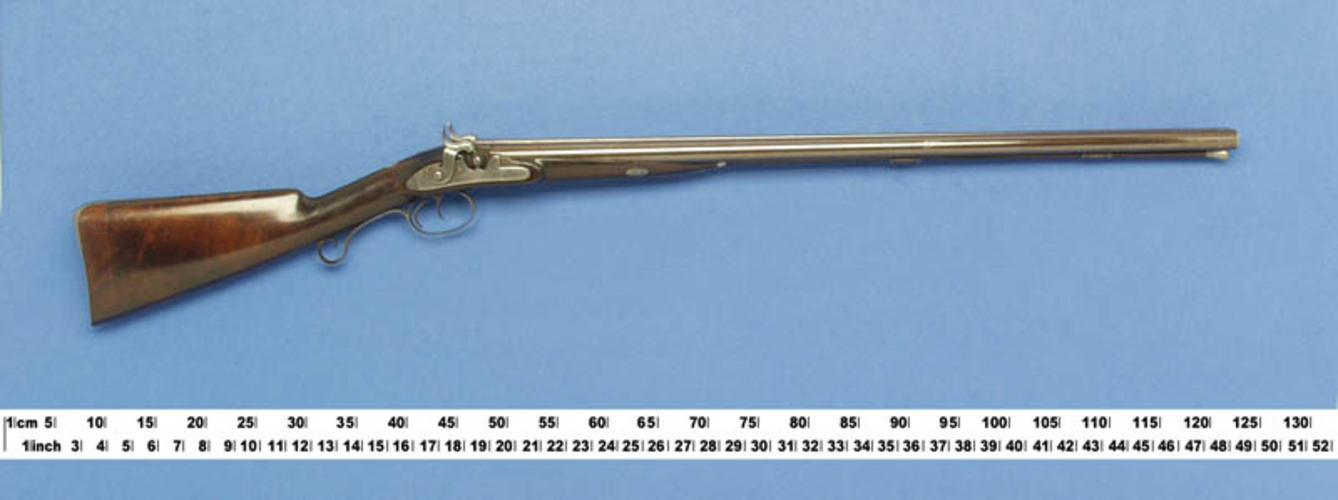By
Louisa Cornell
John Blanch
29 Gracechurch Street
Established 1809
Born in 1784, at the age of 16 John Blanch was apprenticed to London gun maker, Jackson Mortimer. After a short-lived partnership with Mortimer, who at this point had become Blanch’s father-in-law, Blanch established his own business in 1809. He worked mainly for John Manton, but he soon became well established and respected as a gun maker in his own right. Blanch’s respected standing as a businessman and gun maker is evidenced by his rapid advancement through the ranks of the Farriers Company, culminating in 1834 with the prestigious appointment of ‘Master’.
He was an early advocate of the breech loading gun.
In 1826 the business was moved from the premises in Fish Street Hill to 29 Gracechurch Street where it would stay for the next 89 years.

Physical Description
Small steel blade foresight let into 16-pointed star inlay of gold. Two gold breech bands with an engraving of game. Steel screw in vent under nipples, hand hold guard bow, wooden stock, chequered grip and cheek piece. Mounts finely engraved with game and leaf scrolls. Silver monogram plate.
Ezekiel Baker
24 White Chapel Road
Established 1775
Ezekiel Baker was apprenticed to gunsmith Henry Nock and opened his own shop in 1775. He wrote a book about his experiences making and using rifles—Twenty-three Years Practice and Observations with Rifle Guns which was published in 1804. His greatest accomplishment was the design for what became known as the Baker Rifle.
The British Army experimented with rifles after the American Revolutionary War, but found all available rifle designs either too fragile, cumbersome or slow firing to be able to use in a generalized war. On 4 February 1800, a number of leading gun makers were invited to Woolwich to trial their rifle designs by the Board of Ordinance, who were responsible for the procurement of weaponry for the army. Baker’s design was chosen, and he was given an initial order for 800 rifles. That same year the “Experimental Corps of Riflemen” was raised by Colonel Coote Mannington and Lieutenant-Colonel the Hon. William Stewart. The corps was manned by volunteer officers and soldiers from a variety of British regiments and militias. It was renamed and normalized into the army under the name the 95th Rifles Regiment of Foot.
By 1810, five British battalions, three of the 95th and two of the 60th Regiments, as well as several light companies of the King’s German Legion were equipped with the Baker rifle. The rifle was renowned for its accuracy and range. It was used throughout the Napoleonic Wars and continued in service until the 1830s.

A .65″ Baker type smooth bore flintlock cavalry carbine, combining elements from the 1803 pattern.